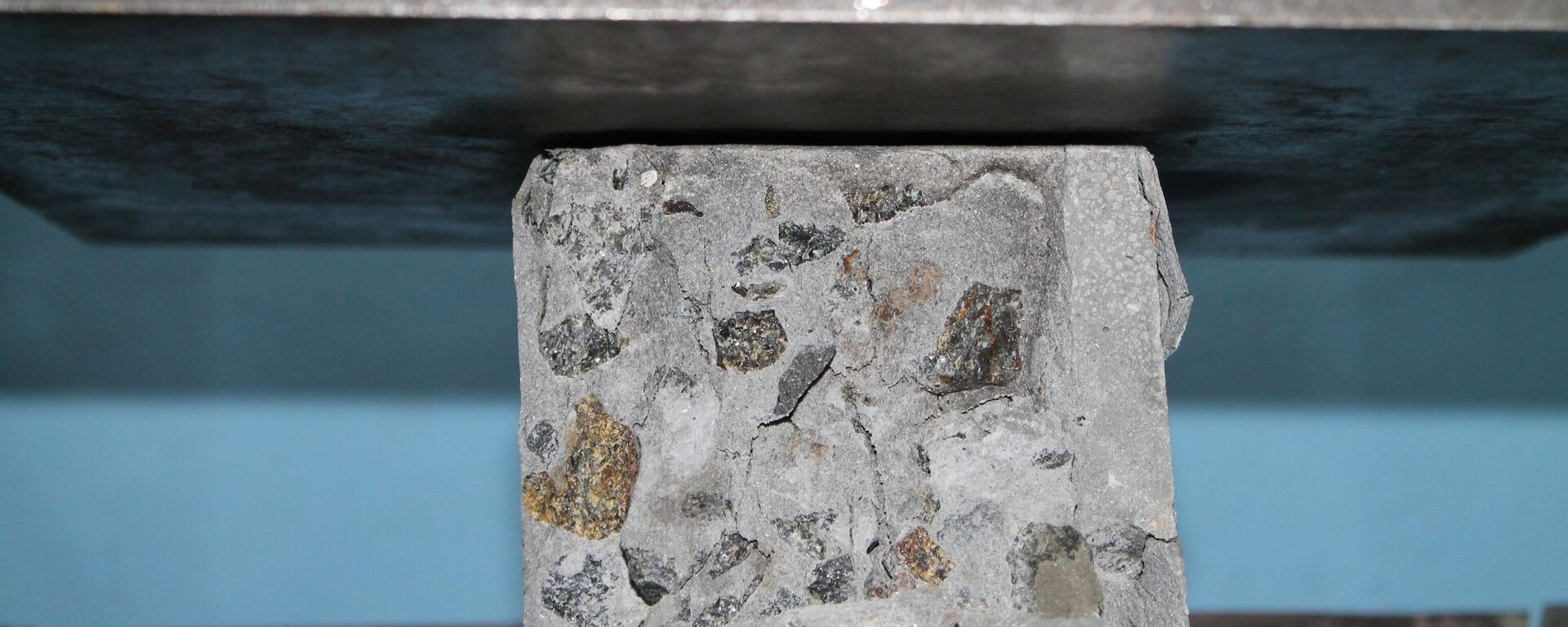https://sputnikglobe.com/20241209/russian-scientists-develop-new-energy-conservation-technique--1121110875.html
Russian Scientists Develop New Energy Conservation Technique
Russian Scientists Develop New Energy Conservation Technique
Sputnik International
Industrial production is accompanied by the release of significant amounts of thermal energy, which in most cases is irretrievably lost, dissipating into the surrounding environment. Currently, more and more attention is being paid to the development of technologies aimed at utilizing waste heat.
2024-12-09T03:15+0000
2024-12-09T03:15+0000
2024-12-09T08:55+0000
beyond politics
science & tech
russia
scientists
green energy
green technologies
environment
pollution
https://cdn1.img.sputnikglobe.com/img/107882/93/1078829302_0:0:1920:1080_1920x0_80_0_0_ce5a896e59529779af1a15d821293521.jpg
A new approach to the development of thermoelectric materials that may potentially be used to convert industrial heat into electricity has been proposed by researchers from Russia’s National University of Science and Technology MISIS.The results of the new study have been published in the Journal of the European Ceramic Society.Industrial production is accompanied by the release of significant amounts of thermal energy, which in most cases is irretrievably lost, dissipating into the surrounding environment. Currently, more and more attention is being paid to the development of technologies aimed at utilizing waste heat. These technologies not only improve the energy efficiency of productive processes but also significantly reduce their environmental impact.A promising solution to this challenge is the use of thermoelectric materials, according to MISIS scientists. These materials have the unique ability to convert thermal energy directly into electrical energy.The MISIS scientists have developed a new material that, according to them, demonstrates improved thermoelectric characteristics at high temperatures compared to existing analogs.This improvement is achieved through the optimal porosity (10-22 percent), which affects both thermal conductivity and electrical conductivity. The base of the material is calcium manganite perovskite with additions of marokite, a manganese-rich mineral.The researchers believe that this development could be applied to thermoelectric generators, which could theoretically convert up to 20% of lost heat into electricity. This could potentially increase the energy efficiency of industrial processes and reduce the carbon footprint.The method is easily scalable and could be applied in countries with developed industries, such as the USA, China, India, or EU countries. This would help improve global energy efficiency and reduce carbon emissions, according to the study authors.According to the scientists, there are other synthesis methods, such as pyrolysis or solid-state synthesis, but they require significant time and energy resources.In the future, the scientists plan to focus on finding optimal additives and determining their correct concentrations, as well as studying their impact on the thermoelectric properties of the material. The data obtained will allow for the development of more efficient and stable thermoelectric composites for high-temperature applications.The work was carried out with the support of the Russian Science Foundation (grant No. 22-79-10278).
https://sputnikglobe.com/20241120/scientists-create-green-concrete-from-coffee-grounds-1120944458.html
russia
Sputnik International
feedback@sputniknews.com
+74956456601
MIA „Rossiya Segodnya“
2024
Sputnik International
feedback@sputniknews.com
+74956456601
MIA „Rossiya Segodnya“
News
en_EN
Sputnik International
feedback@sputniknews.com
+74956456601
MIA „Rossiya Segodnya“
Sputnik International
feedback@sputniknews.com
+74956456601
MIA „Rossiya Segodnya“
russia, russian scientists, nust misis, scientific research, green energy, environment, pollution
russia, russian scientists, nust misis, scientific research, green energy, environment, pollution
Russian Scientists Develop New Energy Conservation Technique
03:15 GMT 09.12.2024 (Updated: 08:55 GMT 09.12.2024) Industrial production is accompanied by the release of significant amounts of thermal energy, which in most cases is irretrievably lost, dissipating into the surrounding environment. Currently, more and more attention is being paid to the development of technologies aimed at utilizing waste heat.
A new approach to the development of thermoelectric materials that may potentially be used to convert industrial heat into electricity has been proposed by researchers from Russia’s National University of Science and Technology MISIS.
The results of the new
study have been published in
the Journal of the European Ceramic Society.Industrial production is accompanied by the release of significant amounts of thermal energy, which in most cases is irretrievably lost, dissipating into the surrounding environment. Currently, more and more attention is being paid to the development of technologies aimed at utilizing waste heat. These technologies not only improve the energy efficiency of productive processes but also significantly reduce their environmental impact.
A promising solution to this challenge is the use of thermoelectric materials, according to MISIS scientists. These materials have the unique ability to convert thermal energy directly into electrical energy.

20 November 2024, 15:15 GMT
The MISIS scientists have developed a new material that, according to them, demonstrates improved thermoelectric characteristics at high temperatures compared to existing analogs.
This improvement is achieved through the optimal porosity (10-22 percent), which affects both thermal conductivity and electrical conductivity. The base of the material is calcium manganite perovskite with additions of marokite, a manganese-rich mineral.
"Our approach is not only more cost-effective and environmentally friendly but also provides additional tools for precise control of the structure and composition of materials, allowing for targeted improvement of their properties," said project leader and leading expert at The Research Center of Engineering Ceramic Nanomaterials (RC ECN) at NUST MISIS, Sergey Yudin.
The researchers believe that this development could be applied to thermoelectric generators, which could theoretically convert up to 20% of lost heat into electricity. This could potentially increase the energy efficiency of industrial processes and reduce the carbon footprint.
The method is easily scalable and could be applied in countries with developed industries, such as the USA, China, India, or EU countries. This would help improve global energy efficiency and reduce carbon emissions, according to the study authors.
According to the scientists, there are other synthesis methods, such as pyrolysis or solid-state synthesis, but they require significant time and energy resources.
"The difference from analogs lies in achieving record efficiency in converting heat into electricity thanks to the unique combination of porosity, phase composition, and structural uniformity. Additionally, the method excludes prolonged high-temperature firing used in traditional approaches, making it more energy-efficient and easier to scale," commented a research associate at the Research Center, Zhanna Ermekova.
In the future, the scientists plan to focus on finding optimal additives and determining their correct concentrations, as well as studying their impact on the thermoelectric properties of the material. The data obtained will allow for the development of more efficient and stable thermoelectric composites for high-temperature applications.
The work was carried out with the support of the Russian Science Foundation (grant No. 22-79-10278).



